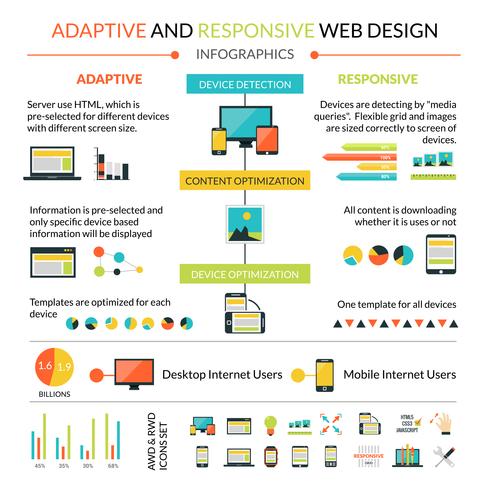Join Us As We Embark On A Trip With Time, Checking Out The Evolution Of Internet Site Style And Just How It Has Actually Influenced The Electronic Landscape
Join Us As We Embark On A Trip With Time, Checking Out The Evolution Of Internet Site Style And Just How It Has Actually Influenced The Electronic Landscape
Blog Article
Article Created By-Jonasson Dodson
In the past, web sites were straightforward and focused on information. Navigating was straight, and style was for desktops. Now, customer experience is vital. Data guides designs for easy navigating. Responsive layouts match various devices. Today, dark setting decreases pressure, and minimalist menus improve navigation. Interactive features involve users, and bold visuals attract attention. AI combination improves involvement. See how style has actually developed to improve your on-line journey.
Very Early Days of Web Design
In the very early days of website design, simpleness preponderated. Websites were fundamental, with limited colors, typefaces, and designs. The emphasis got on offering info rather than fancy visuals. https://emailmarketingcampaigns96284.fare-blog.com/29989935/seeking-to-improve-your-brand-name-s-presence-on-the-net-reveal-the-trick-to-attaining-success-in-electronic-advertising-and-marketing-via-specialist-solutions-that-can-change-your-business accessed the net through sluggish dial-up links, so rate and capability were key.
Navigation food selections were straightforward, usually located on top or side of the web page. Internet sites were designed for desktop computers, as mobile browsing had not been yet prevalent. Content was king, and developers prioritized very easy readability over complicated design aspects.
HTML was the primary coding language used, and developers needed to function within its restrictions. Animations and interactive attributes were very little compared to today's standards. Websites were static, with little dynamic web content or tailored individual experiences.
Increase of User-Focused Layout
With the evolution of site design, a shift towards user-focused style principles has become significantly famous. Today, creating websites that prioritize individual experience is vital for involving visitors and accomplishing company goals. User-focused design includes recognizing the needs, choices, and behaviors of your target audience to tailor the website's layout, material, and features accordingly.
https://www.allbusiness.com/seo-and-sem-marketing-tips-for-limited-budgets-146323-1.html carry out detailed study, such as user studies and use screening, to gather understandings and comments directly from individuals. This data-driven strategy assists in developing user-friendly navigation, clear calls-to-action, and aesthetically attractive interfaces that reverberate with site visitors. By putting the customer at the facility of the layout procedure, web sites can provide a more individualized and satisfying experience.
Receptive design has additionally become an essential aspect of user-focused design, ensuring that web sites are enhanced for numerous tools and display sizes. This flexibility enhances accessibility and functionality, accommodating the varied methods users communicate with internet sites today. Fundamentally, the rise of user-focused design represents a shift in the direction of creating digital experiences that prioritize the demands and assumptions of completion customer.
Modern Trends in Website Design
Check out the most recent patterns forming web design today. One prominent trend is dark setting style, offering a smooth and modern-day look while decreasing eye stress in low-light environments. One more vital pattern is minimalist navigation, simplifying menus and boosting user experience by concentrating on essential elements. Incorporating micro-interactions, such as computer animated buttons or scrolling impacts, can develop a much more interesting and interactive web site. https://httpsedgyappseo-jobs97541.webbuzzfeed.com/30396500/ready-to-elevate-your-electronic-game-learn-innovative-web-design-techniques-that-will-certainly-transform-your-website-right-into-a-powerhouse-of-on-line-success continues to be critical, ensuring seamless customer experiences across different devices. In addition, utilizing bold typography and asymmetrical layouts can include aesthetic passion and accentuate particular web content.
Integrating AI innovation, like chatbots for consumer assistance or individualized referrals, improves individual interaction and streamlines procedures. Access has additionally come to be a substantial pattern, with developers prioritizing comprehensive design methods to accommodate varied individual requirements. Embracing sustainability by optimizing site performance for speed and performance is another emerging trend in web design. Working together with customer feedback and information analytics to repeat and improve style continually is vital for remaining pertinent in the ever-evolving electronic landscape. By welcoming these modern-day fads, you can develop an aesthetically enticing, easy to use web site that resonates with your target market.
Conclusion
As you assess the development of site style from the very early days to currently, you can see just how user-focused design has actually ended up being the driving force behind modern fads.
Welcome https://best-seo-plugins-for-word06284.nizarblog.com/30065328/enhance-your-exposure-on-the-net-by-picking-the-perfect-local-search-engine-optimization-firm-for-your-business-learn-exactly-how-to-pick-the-very-best-option of change and adjustment in web design, constantly maintaining the user experience at the center.
Remain present with the most recent fads and technologies, and never stop developing your technique to create visually stunning and user-friendly sites.
Develop, adapt, and develop - the future of web design remains in your hands.
